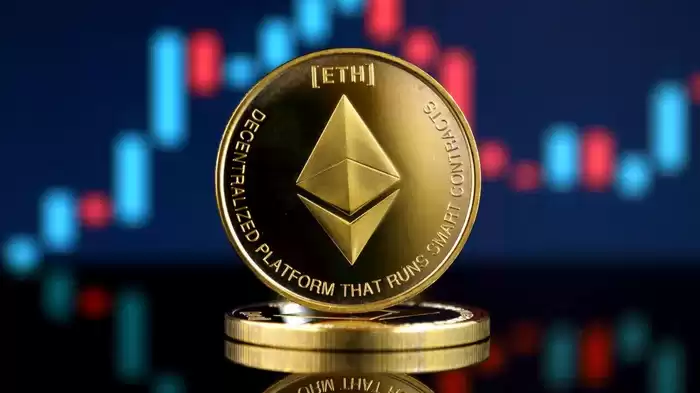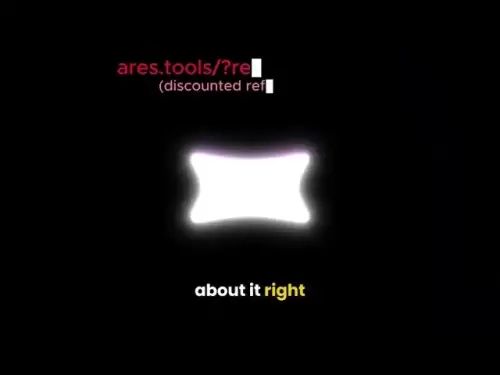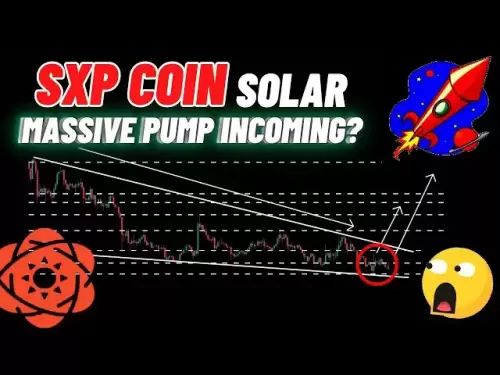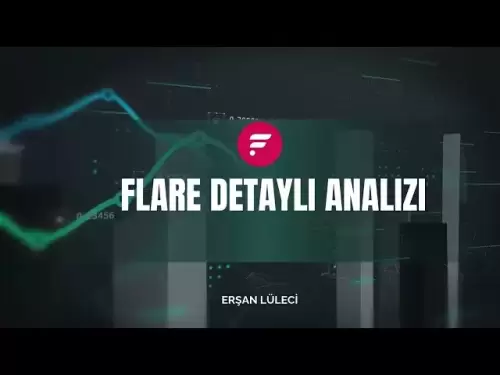-
 Bitcoin
Bitcoin $117500
2.04% -
 Ethereum
Ethereum $3759
3.02% -
 XRP
XRP $3.171
3.30% -
 Tether USDt
Tether USDt $1.000
0.03% -
 BNB
BNB $782.4
2.52% -
 Solana
Solana $187.2
5.62% -
 USDC
USDC $0.0000
0.02% -
 Dogecoin
Dogecoin $0.2380
5.26% -
 TRON
TRON $0.3175
1.07% -
 Cardano
Cardano $0.8227
4.03% -
 Hyperliquid
Hyperliquid $44.50
5.44% -
 Sui
Sui $4.020
10.07% -
 Stellar
Stellar $0.4396
6.28% -
 Chainlink
Chainlink $18.32
4.55% -
 Hedera
Hedera $0.2628
10.71% -
 Bitcoin Cash
Bitcoin Cash $554.8
4.90% -
 Avalanche
Avalanche $24.20
4.60% -
 Litecoin
Litecoin $113.7
2.31% -
 Shiba Inu
Shiba Inu $0.00001413
5.99% -
 UNUS SED LEO
UNUS SED LEO $8.984
0.11% -
 Toncoin
Toncoin $3.326
7.22% -
 Ethena USDe
Ethena USDe $1.001
0.00% -
 Uniswap
Uniswap $10.49
4.56% -
 Polkadot
Polkadot $4.092
4.02% -
 Monero
Monero $326.6
1.30% -
 Dai
Dai $1.000
-0.01% -
 Bitget Token
Bitget Token $4.570
2.49% -
 Pepe
Pepe $0.00001267
5.10% -
 Aave
Aave $297.3
3.10% -
 Cronos
Cronos $0.1344
4.10%
how to use ethereum blockchain
To interact with the Ethereum blockchain, users require an Ethereum wallet to store and manage their ETH and ERC-20 tokens, ensuring secure transactions.
Oct 21, 2024 at 02:05 am

How to Use Ethereum Blockchain
Ethereum is a decentralized blockchain platform that runs smart contracts: applications that run exactly as programmed without any possibility of fraud or third-party interference. It works by distributed ledger technology to ensure authenticity and enhance safety.
Step 1: Get an Ethereum Wallet
To interact with the Ethereum blockchain, the first thing you will need is an Ethereum wallet. This wallet will allow you to store and manage your ETH and other ERC-20 tokens. There are many different Ethereum wallets available, both software and hardware.
Step 2: Fund Your Wallet
Once you have an Ethereum wallet, you will need to fund it with ETH. You can do this by purchasing ETH from a cryptocurrency exchange or by mining ETH yourself.
Step 3: Connect to the Ethereum Network
Once you have ETH in your wallet, you will need to connect to the Ethereum network. You can do this by using a software client such as MetaMask or by running a full Ethereum node.
Step 4: Deploy a Smart Contract
Once connected to the Ethereum network, you can start deploying smart contracts. A smart contract is simply a program that runs on the Ethereum blockchain. Here's an example of a smart contract that stores a greeting message:
pragma solidity ^0.8.0;
contract Greeting {
string greeting;
function setGreeting(string memory _greeting) public {
greeting = _greeting;
}
function getGreeting() public view returns (string memory) {
return greeting;
}
}You can use a tool like Remix to develop and deploy your smart contracts. To deploy a contract, you will need to pay a transaction fee.
Step 5: Interact with Your Contract
Once your contract is deployed, you can interact with it using the methods defined in the contract. To interact with the smart contract, you send a transaction from your Ethereum wallet.
For example, to set the greeting message for the contract above, you would send a transaction to the setGreeting
{
"from": "YOUR_WALLET_ADDRESS",
"to": "CONTRACT_ADDRESS",
"data": "0x7361fe960000000000000000000000000000000000000000000000000000000000000020000000000000000000000000000000000000000000000000000000000000000546f646179210000000000000000000000000000000000000000000000000000",
}Advanced Features
The Ethereum blockchain is a powerful platform that offers a variety of advanced features. These features include:
- Decentralized Applications (dApps): dApps are applications that run on the Ethereum blockchain and take advantage of its decentralized nature.
- Oracles: Oracles are services that provide data from the real world to smart contracts.
- Non-Fungible Tokens (NFTs): NFTs are unique digital assets that can be used to represent ownership of physical or digital assets.
These are just a few of the many features that are available on the Ethereum blockchain. If you are interested in learning more about Ethereum, there are a number of resources available online.
Disclaimer:info@kdj.com
The information provided is not trading advice. kdj.com does not assume any responsibility for any investments made based on the information provided in this article. Cryptocurrencies are highly volatile and it is highly recommended that you invest with caution after thorough research!
If you believe that the content used on this website infringes your copyright, please contact us immediately (info@kdj.com) and we will delete it promptly.
- Pi Coin, Wallet Features, and Coinbase: What's the Buzz?
- 2025-07-26 18:30:12
- Worldcoin, Punisher Coin, and the Meme Coin Mania: What's the Haps?
- 2025-07-26 18:30:12
- Conviction, Justice System, and Murders: A Look at Recent Cases and Shifting Perspectives
- 2025-07-26 18:50:11
- Shiba Inu, Remittix, and the Market Surge: What's the Hype?
- 2025-07-26 19:10:12
- Cardano Price, ADA Holders, and Leadership Criticism: What's the Real Deal?
- 2025-07-26 19:30:12
- MicroStrategy, Bitcoin, and XRP Whale Dumps: What's the Deal?
- 2025-07-26 19:30:12
Related knowledge

What is Chainlink (LINK)?
Jul 22,2025 at 02:14am
Understanding Chainlink (LINK): The Decentralized Oracle NetworkChainlink is a decentralized oracle network designed to bridge the gap between blockch...

What is Avalanche (AVAX)?
Jul 22,2025 at 08:35am
What is Avalanche (AVAX)?Avalanche (AVAX) is a decentralized, open-source blockchain platform designed to support high-performance decentralized appli...

What is Polkadot (DOT)?
Jul 19,2025 at 06:35pm
Understanding the Basics of Polkadot (DOT)Polkadot (DOT) is a multi-chain network protocol designed to enable different blockchains to transfer messag...

What is Litecoin (LTC)?
Jul 23,2025 at 11:35am
Overview of Litecoin (LTC)Litecoin (LTC) is a peer-to-peer cryptocurrency that was created in 2011 by Charlie Lee, a former Google engineer. It is oft...

What is Monero (XMR)?
Jul 21,2025 at 10:07am
What is Monero (XMR)?Monero (XMR) is a decentralized cryptocurrency designed to provide enhanced privacy and anonymity for its users. Unlike Bitcoin a...

How to add indicators to Ethereum chart on TradingView?
Jul 19,2025 at 07:15am
What Is an Ethereum Chart on TradingView?The Ethereum chart on TradingView is a visual representation of the price movement of Ethereum (ETH) over a s...

What is Chainlink (LINK)?
Jul 22,2025 at 02:14am
Understanding Chainlink (LINK): The Decentralized Oracle NetworkChainlink is a decentralized oracle network designed to bridge the gap between blockch...

What is Avalanche (AVAX)?
Jul 22,2025 at 08:35am
What is Avalanche (AVAX)?Avalanche (AVAX) is a decentralized, open-source blockchain platform designed to support high-performance decentralized appli...

What is Polkadot (DOT)?
Jul 19,2025 at 06:35pm
Understanding the Basics of Polkadot (DOT)Polkadot (DOT) is a multi-chain network protocol designed to enable different blockchains to transfer messag...

What is Litecoin (LTC)?
Jul 23,2025 at 11:35am
Overview of Litecoin (LTC)Litecoin (LTC) is a peer-to-peer cryptocurrency that was created in 2011 by Charlie Lee, a former Google engineer. It is oft...

What is Monero (XMR)?
Jul 21,2025 at 10:07am
What is Monero (XMR)?Monero (XMR) is a decentralized cryptocurrency designed to provide enhanced privacy and anonymity for its users. Unlike Bitcoin a...

How to add indicators to Ethereum chart on TradingView?
Jul 19,2025 at 07:15am
What Is an Ethereum Chart on TradingView?The Ethereum chart on TradingView is a visual representation of the price movement of Ethereum (ETH) over a s...
See all articles

























































































